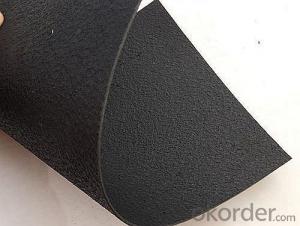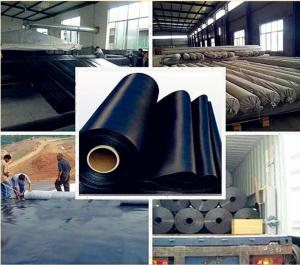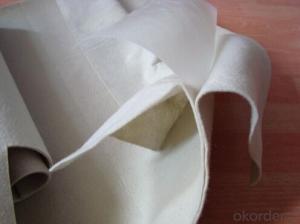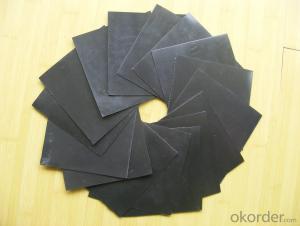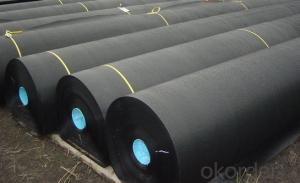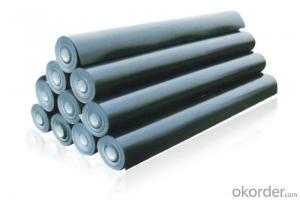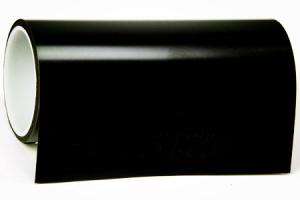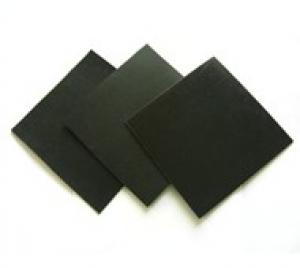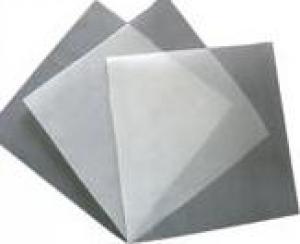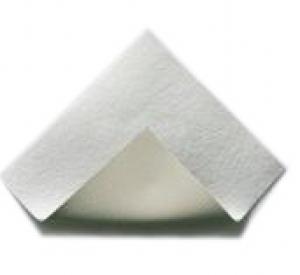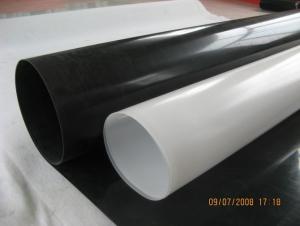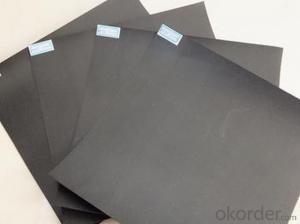Hdpe Black Polypropylene Polyvinyl Chloride Waterproof Membrane Roll
- Loading Port:
- Qingdao
- Payment Terms:
- TT OR LC
- Min Order Qty:
- 2000 m²
- Supply Capability:
- 100000 m²/month
OKorder Service Pledge
OKorder Financial Service
You Might Also Like
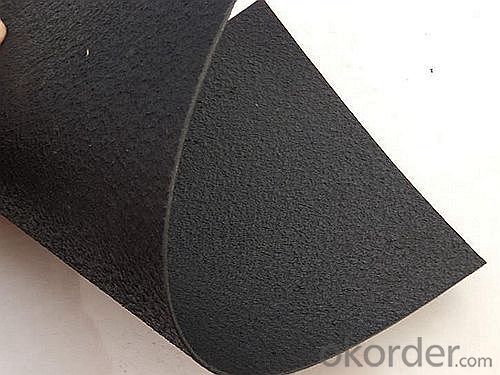
Product Introduction
Geomembrane HDPE for Shrimp Pond is mainly made of virgin HDPE with blow molding technique. Its main function is to prevent the liquid leakage and gas volatilization.
HDPE Geomembrane
Thickness: 1.0mm to 3.0mm
Roll Size: 4m-9m in width
roll length as design or client’s request
LDPE Geomembrane
Thickness: 0.1mm to 3.0mm
Roll Size: 4m-9m in width
roll length as design or client’s request
LLDPE Geomembrane
Thickness: 0.5mm to 3.0mm
Roll Size: 4m-9m in width
roll length as design or client’s request
Our Service
1.On a regular basis or as per your request,we entrust national testing agencies to conduct quality inspections
2. Strictly in accordance with the ISO9001-2008 international quality system standard,we monitor and manage the whole process throughout production,quality testing,and measurement to ensure product quality
3. For quality-related construction delay or substandard construction(except for damage or losses due to customer’s responsibility or irresistible natural disasters),we have refunding,replacement,and repair services.We will respond to customers’ feedbacks on quality issues within 24 hours.
FAQ:
Q: What kind of payments does jenor support?
A: T/T, L/C, Cash are accepted.
Q: Do you charge for the samples?
A: Accordeing to our company policy, the samples are free, we only charge the freight fee. And we will return the freight fee during the next order.
Q: Can you produce according to customers' design?
A: Sure, we are professional manufacturer, OEM and ODM are both welcome.
Q: Do you have other products?
A: Yes, please check the pictures:
- Q:How do geomembranes contribute to erosion control in coastal and shoreline protection?
- Geomembranes contribute to erosion control in coastal and shoreline protection by acting as barriers that prevent the erosion of soil and the loss of sediment. They are installed along the shoreline to provide a protective layer that minimizes the impact of waves, tides, and currents. These impermeable membranes help to stabilize the shoreline by reducing the erosion caused by the forces of nature, thereby safeguarding coastal areas and mitigating the negative effects of erosion.
- Q:How do geomembranes withstand temperature variations?
- Geomembranes are designed to withstand temperature variations through their unique composition and structure. They are made from materials that have a high resistance to temperature changes, such as polyethylene or polyvinyl chloride (PVC). These materials have excellent thermal stability, allowing them to remain durable and flexible across a wide range of temperatures. Additionally, geomembranes are often reinforced with additives and reinforcements that further enhance their ability to withstand temperature fluctuations. This combination of materials and reinforcements enables geomembranes to maintain their integrity and functionality even in extreme hot or cold conditions.
- Q:How do geomembranes prevent water pollution in agricultural waste management?
- Geomembranes are impermeable barriers that are used in agricultural waste management to prevent water pollution. They are installed in areas such as manure storage ponds or lagoons to create a sealed lining that prevents the leakage of pollutants into the surrounding soil and water sources. This containment prevents the runoff of agricultural waste, including harmful chemicals and nutrients, from entering streams, rivers, and groundwater, thereby protecting water quality and preventing water pollution.
- Q:Can geomembranes be used in agricultural waste management?
- Yes, geomembranes can be used in agricultural waste management. They are often employed as liners in containment systems for manure storage, anaerobic digesters, and lagoons to prevent leakage and contamination of soil and groundwater. Geomembranes effectively control odor emissions and facilitate proper waste disposal, promoting environmental sustainability in agriculture.
- Q:What are the features of environmentally friendly geomembrane?
- Because it has strong tensile strength, high impact strength, impermeability, acid and alkali resistance, heat resistance, weatherability and wear-resistant properties, seepage-proof geomembrane is widely used in construction industry in coastal areas. It is also widely used in rivers and dams, reservoirs, diversion tunnels, highways, railways, airports, underground, underwater and other projects.
- Q:New national standard for polyethylene geomembrane
- GB / T-1998 Geosynthetics Polyethylene Geomembrane GBT-1998 Geosynthetics Polyethylene Geomembrane This standard specifies the classification and naming of polyethylene geomembranes, technical requirements, test methods, inspection rules, marking, packaging, transportation and Storage. This standard applies to polyethylene resin, ethylene copolymer as raw materials to add all kinds of additives produced by the polyethylene geomembrane.
- Q:Polyethylene geomembrane perennial soaked in water will not release harmful gases
- any experiments by Academy of Agricultural Sciences should entail as less toxic and side effects as possible.
- Q:Is lectric heating film electric heater electricity-saving
- It depends on two factors, one is the electric heat conversion efficiency, the two is the power. The high the electric heating conversion efficiency, the less electricity it consumes. Well, if we understand this we can analyze whether our household appliances consumes electricity. Power is a fixed value, which is fixed before we buy. For example, we buy a electrothermal film heater whose power is 2000W. This means that the heater consumes 2 kwh of electricity per hour, which is 2 degrees, if it is 1500W, that is 1.5 degrees Electric per hour. The electrothermal conversion efficiency is to consume things unease to know, but we can generally analyze like so: The process of heating is a process that transfers electric energy into heat energy, so we would hope that electrothermal conversion efficiency be higher if we want to get maximum heat. According to the law of conservation of energy, the greatest possibility is 100% conversion. But in fact, the conversion of electric energy into heat energy also includes the conversion into light, (such as small solar heating, which is also luminous in the the moment of heating, a lot of power is converted into the energy we don't need, so the conversion efficiency is low, magnetic energy and other energy. Therefore, in general, the electrothermal conversion efficiency of most heating body is almost the same in the current market, the transfer efficiency of heat body that is not luminous is higher than those giving out lights.
- Q:What are the considerations for geomembrane selection in oil and gas pipeline corrosion protection?
- When selecting a geomembrane for corrosion protection in oil and gas pipelines, several key considerations should be taken into account. Firstly, the geomembrane must be chemically resistant to the corrosive substances found in the oil and gas industry, such as hydrocarbons and various chemicals. It should also be able to withstand high temperatures and pressures typically encountered in pipeline operations. Additionally, the geomembrane should have excellent mechanical properties to ensure durability and resistance to punctures, tears, and other forms of physical damage. It should be able to withstand the stress and strain imposed during installation, as well as any potential ground movements or external forces that may occur over the pipeline's lifespan. The selection process should also consider the geomembrane's compatibility with other corrosion protection systems, such as cathodic protection or coatings. Ensuring compatibility will help avoid any potential issues or deficiencies in the overall corrosion protection system. Lastly, factors such as cost-effectiveness, ease of installation, and long-term performance should be evaluated. It is crucial to strike a balance between the initial investment and the expected lifespan of the geomembrane, as well as any potential maintenance or repair requirements. Overall, the considerations for geomembrane selection in oil and gas pipeline corrosion protection revolve around chemical resistance, mechanical properties, compatibility with other protection systems, and cost-effectiveness.
- Q:How do geomembranes contribute to wetland restoration projects?
- Geomembranes contribute to wetland restoration projects by acting as a barrier to prevent water leakage, thus creating and maintaining the necessary wetland conditions. They help retain water, control water flow, and prevent erosion, allowing wetland vegetation to thrive and providing a suitable habitat for various aquatic species.
1. Manufacturer Overview |
|
|---|---|
| Location | |
| Year Established | |
| Annual Output Value | |
| Main Markets | |
| Company Certifications | |
2. Manufacturer Certificates |
|
|---|---|
| a) Certification Name | |
| Range | |
| Reference | |
| Validity Period | |
3. Manufacturer Capability |
|
|---|---|
| a)Trade Capacity | |
| Nearest Port | |
| Export Percentage | |
| No.of Employees in Trade Department | |
| Language Spoken: | |
| b)Factory Information | |
| Factory Size: | |
| No. of Production Lines | |
| Contract Manufacturing | |
| Product Price Range | |
Send your message to us
Hdpe Black Polypropylene Polyvinyl Chloride Waterproof Membrane Roll
- Loading Port:
- Qingdao
- Payment Terms:
- TT OR LC
- Min Order Qty:
- 2000 m²
- Supply Capability:
- 100000 m²/month
OKorder Service Pledge
OKorder Financial Service
Similar products
New products
Hot products
Related keywords
